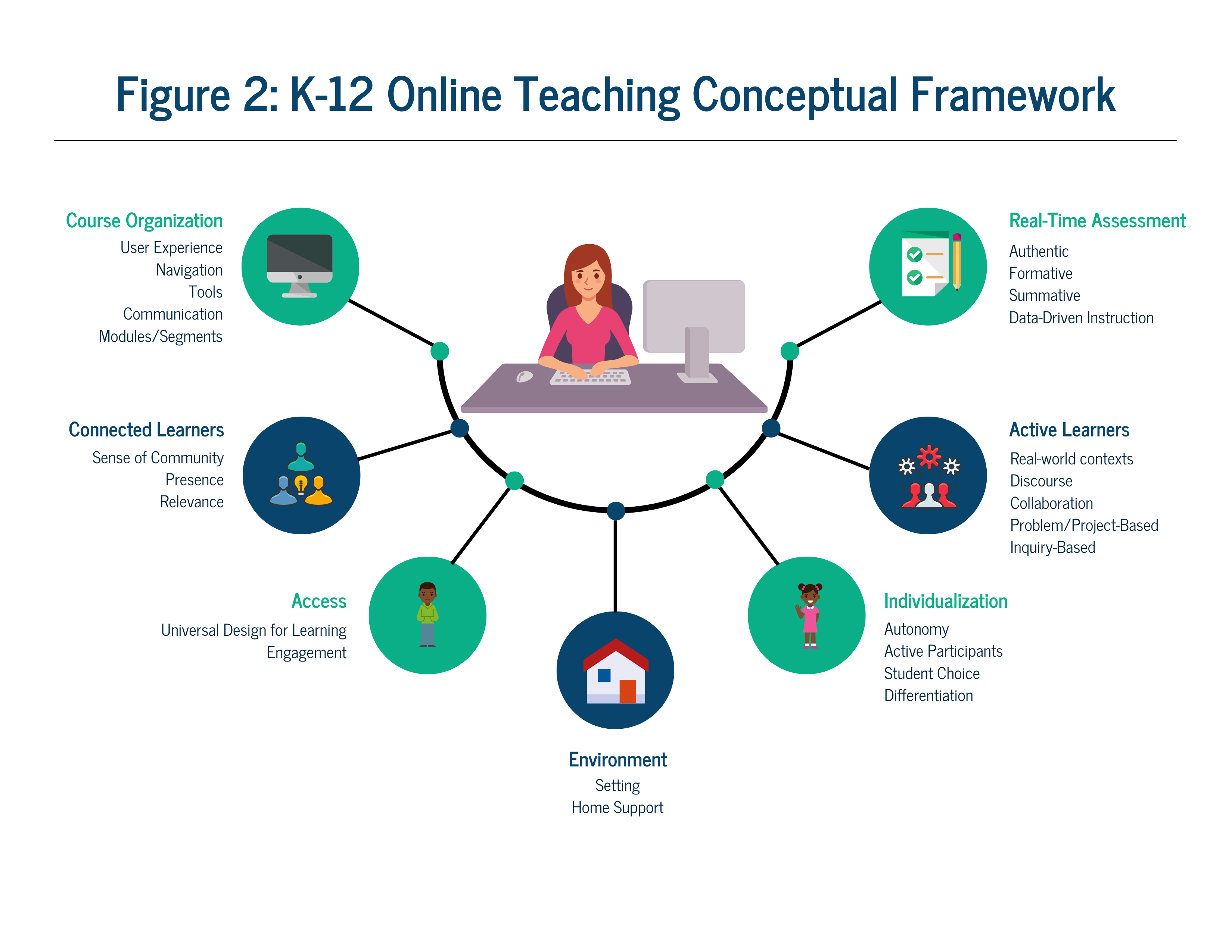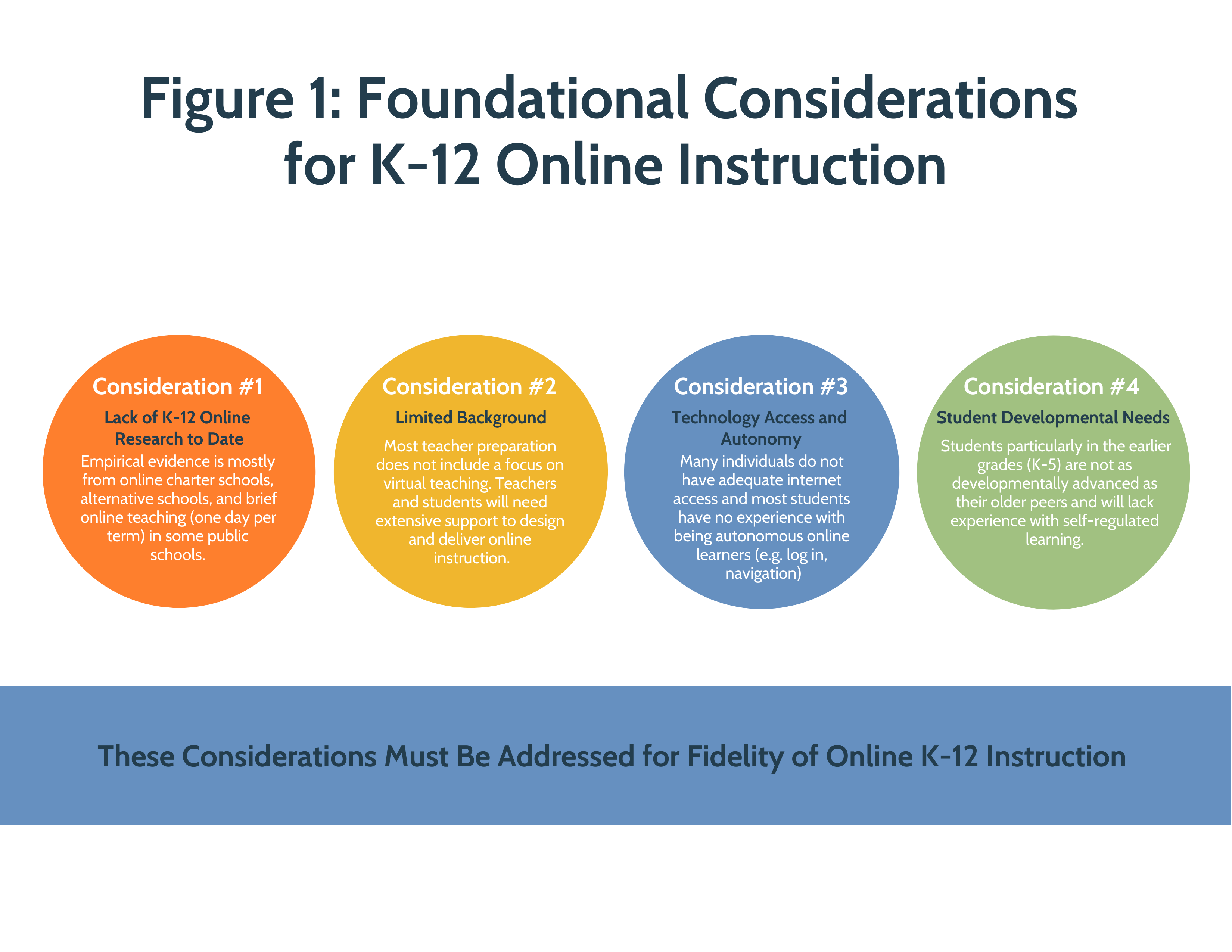Navigating the Landscape of K-12 Online Teaching: Opportunities, Challenges, and Considerations
Related Articles: Navigating the Landscape of K-12 Online Teaching: Opportunities, Challenges, and Considerations
Introduction
In this auspicious occasion, we are delighted to delve into the intriguing topic related to Navigating the Landscape of K-12 Online Teaching: Opportunities, Challenges, and Considerations. Let’s weave interesting information and offer fresh perspectives to the readers.
Table of Content
Navigating the Landscape of K-12 Online Teaching: Opportunities, Challenges, and Considerations

The realm of education is undergoing a transformative shift, with online learning emerging as a prominent force. This transformation has opened up a new avenue for educators: K-12 online teaching. This article delves into the intricacies of this burgeoning field, examining its potential, challenges, and considerations for aspiring and established educators.
Defining the Landscape:
K-12 online teaching encompasses the delivery of educational content and instruction to students in grades kindergarten through twelfth grade through digital platforms. This encompasses a wide range of formats, including live video conferencing, asynchronous learning modules, interactive simulations, and virtual field trips.
Motivations for Online Teaching:
The rise of online teaching is driven by a confluence of factors:
- Flexibility and Accessibility: Online teaching offers a flexible work schedule, allowing educators to work from anywhere with an internet connection. This is particularly appealing to individuals seeking a work-life balance or those residing in geographically remote areas.
- Increased Demand: The demand for online learning has surged in recent years due to the COVID-19 pandemic and the growing recognition of its benefits. This has created a need for qualified online educators.
- Technological Advancements: The development of sophisticated learning management systems (LMS) and online learning platforms has made it easier for educators to deliver engaging and interactive online lessons.
- Innovation in Pedagogy: Online teaching necessitates innovative teaching strategies and a deeper understanding of technology-mediated learning. This encourages educators to explore new pedagogical approaches and enhance their digital literacy.
Types of K-12 Online Teaching Positions:
K-12 online teaching roles can vary significantly in terms of their scope, responsibilities, and employer type. Some common types include:
- Full-Time Online Teachers: These educators typically teach a full course load, similar to traditional classroom teachers. They are responsible for designing curriculum, delivering instruction, grading assignments, and communicating with students and parents.
- Part-Time Online Teachers: These educators may teach one or more courses, often on a flexible schedule. They may work for various institutions, including public schools, private schools, and online learning platforms.
- Supplemental Online Teachers: These educators provide additional support to students enrolled in traditional classroom settings, such as tutoring, enrichment programs, or online homework help.
- Virtual School Teachers: These educators work for virtual schools, which offer fully online educational programs from kindergarten to high school.
Key Skills and Qualifications:
Success in K-12 online teaching requires a unique blend of skills and qualifications:
- Strong Teaching Skills: A deep understanding of effective pedagogical practices, including differentiated instruction, active learning strategies, and assessment techniques, is essential.
- Technology Proficiency: Online educators must be comfortable using various digital tools and platforms, including video conferencing software, learning management systems, and online assessment tools.
- Communication Skills: Excellent written and verbal communication skills are crucial for engaging students in online environments, providing clear instructions, and fostering positive interactions.
- Organization and Time Management: Online teachers need to be highly organized to manage multiple courses, deadlines, and student communication.
- Adaptability and Flexibility: The ability to adapt to changing technology and student needs is essential in the dynamic world of online education.
Challenges of Online Teaching:
While online teaching offers many advantages, it also presents unique challenges:
- Maintaining Student Engagement: Engaging students in a virtual environment requires creative teaching strategies and a proactive approach to fostering interaction.
- Technical Issues: Technical difficulties with internet connectivity, software glitches, or student access to technology can disrupt online learning.
- Lack of Physical Presence: The absence of a physical classroom setting can make it difficult to establish rapport with students and observe their nonverbal cues.
- Work-Life Balance: The flexibility of online teaching can also lead to blurring the lines between work and personal life, making it essential to establish clear boundaries.
Tips for Success in K-12 Online Teaching:
- Develop a Strong Online Presence: Create a professional website or online portfolio showcasing your teaching experience, skills, and philosophy.
- Invest in Professional Development: Stay current with emerging technologies and online teaching best practices by participating in workshops, conferences, and online courses.
- Build a Supportive Network: Connect with other online educators to share ideas, resources, and support.
- Prioritize Student Engagement: Use interactive activities, collaborative projects, and personalized feedback to keep students motivated and involved.
- Embrace Technology: Explore new technologies and learning platforms to enhance your online teaching experience.
FAQs Regarding K-12 Online Teaching:
1. What qualifications are required for online teaching?
The specific qualifications vary depending on the position and employer. However, most require a bachelor’s degree, teaching certification (in some cases), and experience in teaching or working with children.
2. How do I find online teaching jobs?
There are various resources for finding online teaching positions, including online job boards, educational websites, and professional organizations.
3. What are the salary expectations for online teachers?
Salaries for online teachers vary based on factors such as experience, location, employer, and teaching load. It is advisable to research salary ranges for specific positions and geographic areas.
4. What are the benefits of online teaching?
Benefits include flexibility, work-life balance, access to a wider range of students, and the opportunity to work from anywhere with an internet connection.
5. What are the downsides of online teaching?
Challenges include maintaining student engagement, dealing with technical issues, and the absence of a physical classroom setting.
Conclusion:
The world of K-12 online teaching is dynamic and evolving, offering both opportunities and challenges. By understanding the key skills, qualifications, and considerations involved, aspiring and experienced educators can navigate this landscape effectively. With dedication, adaptability, and a passion for education, online teaching can provide a rewarding and fulfilling career path.








Closure
Thus, we hope this article has provided valuable insights into Navigating the Landscape of K-12 Online Teaching: Opportunities, Challenges, and Considerations. We hope you find this article informative and beneficial. See you in our next article!
